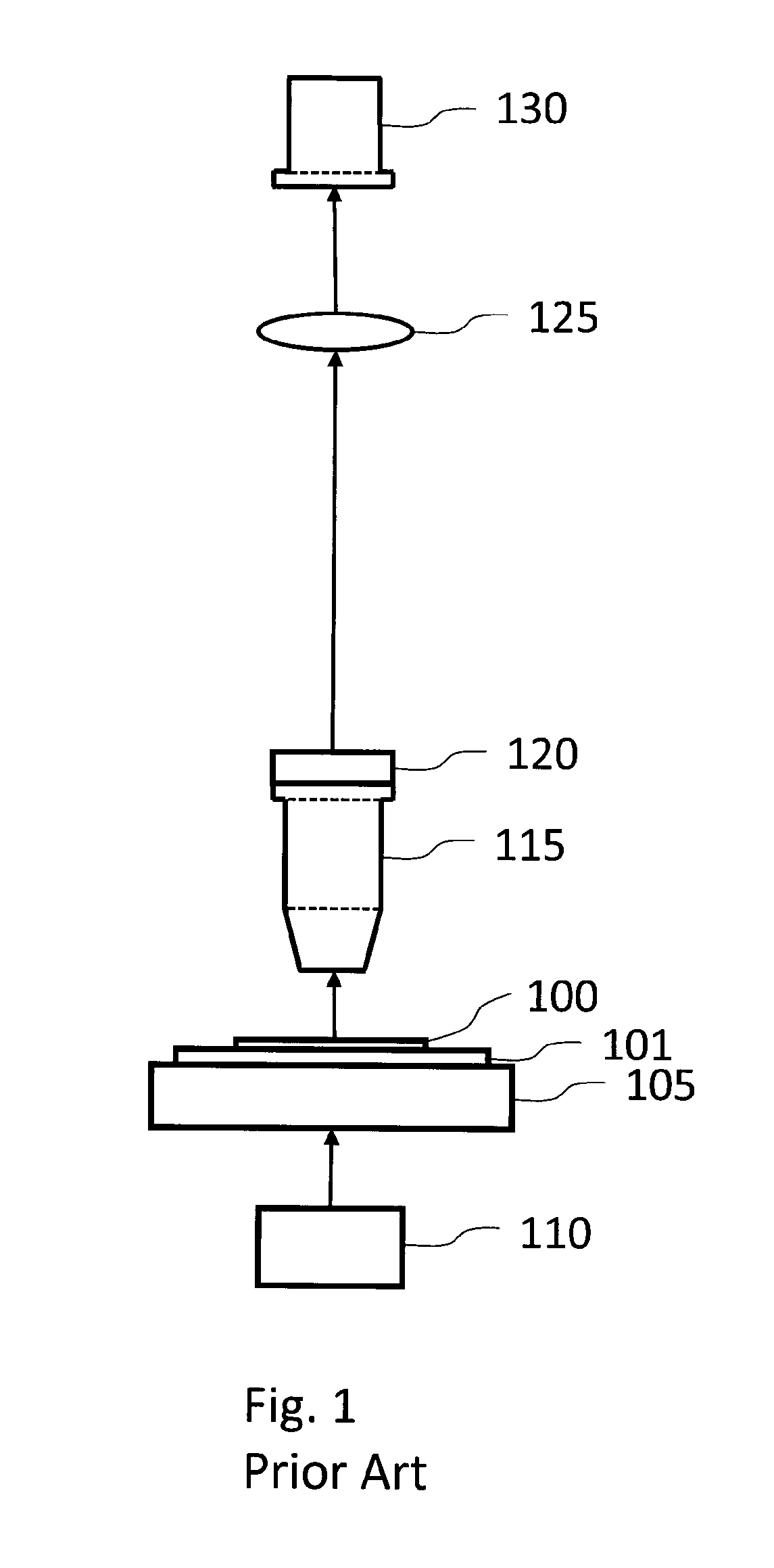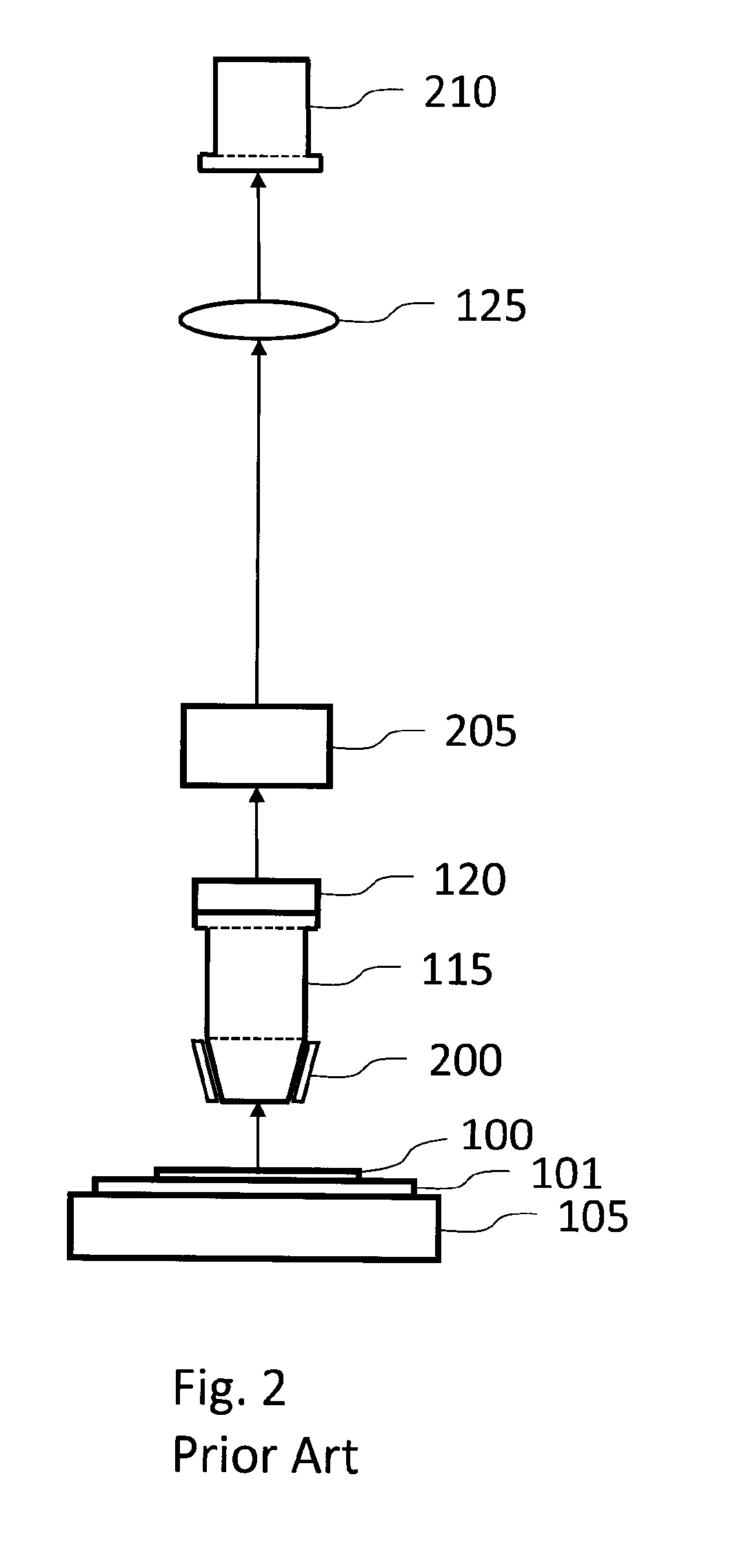Pathology Slide Scanner
a slide scanner and pathology technology, applied in the field of microscope imaging of large specimens, can solve the problems of increasing the chance of tiling artifacts, increasing bleaching, and slow fluorescence imaging of tiling microscopes, and achieve the effect of expanding the dynamic rang
- Summary
- Abstract
- Description
- Claims
- Application Information
AI Technical Summary
Benefits of technology
Problems solved by technology
Method used
Image
Examples
first embodiment
[0059]FIG. 3 shows a microscope for fluorescence and brightfield imaging that is this invention. A tissue specimen 100 (or other specimen to be imaged) mounted on microscope slide 101 on a scanning stage 105. When used for fluorescence imaging, the tissue specimen is illuminated from above by illumination source 310, mounted above the specimen (epifluorescence) so that the intense illumination light that passes through the specimen is not mixed with the weaker fluorescence emission from the specimen, as it would be if the fluorescence illumination source were below the specimen. Several different optical combinations can be used for epifluorescence illumination—light from a source mounted on the microscope objective, as shown; illumination light that is injected into the microscope tube between the microscope objective and the tube lens, imaged onto the back aperture of the objective, using a dichroic beamsplitter to reflect it down through the microscope objective and onto the spec...
PUM
 Login to View More
Login to View More Abstract
Description
Claims
Application Information
 Login to View More
Login to View More - R&D
- Intellectual Property
- Life Sciences
- Materials
- Tech Scout
- Unparalleled Data Quality
- Higher Quality Content
- 60% Fewer Hallucinations
Browse by: Latest US Patents, China's latest patents, Technical Efficacy Thesaurus, Application Domain, Technology Topic, Popular Technical Reports.
© 2025 PatSnap. All rights reserved.Legal|Privacy policy|Modern Slavery Act Transparency Statement|Sitemap|About US| Contact US: help@patsnap.com



